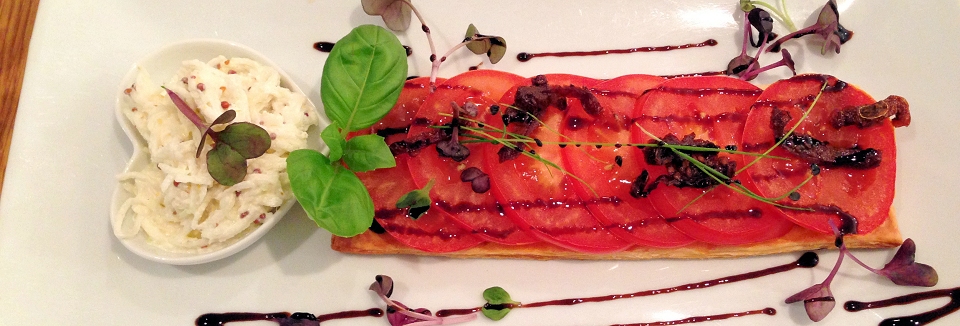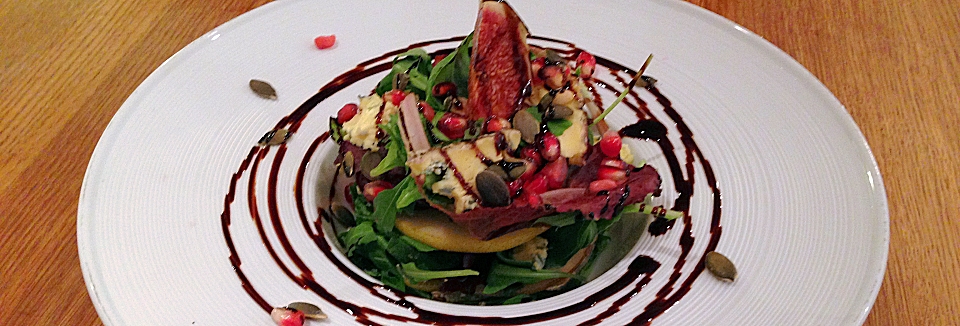Therefore, they may have difficulty fully expressing their feelings, being vulnerable or opening up to someone, and creating a deep and enduring connection. They believe that you will ridicule their whole being when they share about their likes or dislikes. This is because FAs are naturally secretive. Enter your email address to follow JebKinnison.com and receive notifications of new posts by email. They may be unable to fully trust that someone will actually commit and be there for them, whether because of a core lack of self-worth, a core lack of trust in others, or some combination of the two. Louise Jackson Wish ppl came with disclosures about their attachment styles. MORE: 15 Shocking Signs Of Abandonment Issues In Adults. Coined by relationship expert James Bauer, this fascinating concept is about what really drives men in relationships, which is ingrained in their DNA. They long for closeness and true connection except that they have difficulty in trusting and being affectionate to others. A unique combination of clinical psychologist, nutritionist, and special education teacher, Dr. Nicole Beurkens, Ph.D., has almost 20 years of experience supporting children, young adults, and families. An avoidant person doesn't want anyone to know they need help coping with life's challenges. With patience, understanding, and a commitment to growth, two anxious avoidants can find love and happiness with one another. Fearful-Avoidant with Fearful-Avoidant: Even more rare since the fearful-avoidant type is uncommon. To ease your worries, in this article, I will give you signs that confirm their feelings for you and how you can understand them better. They might also find it challenging to communicate effectively about their needs and feelings, leading to misunderstandings and unresolved conflicts. They endure it when something doesnt feel right and will choose to be non-confrontational about things. Serial Monogamy: the Fearful-Avoidant Do It Faster Can fearful avoidants have successful relationships? FAs usually have a very small circle of friends, and its also because of this that theyre very close. Secure Young children who experience reliable caregiving behavior are able to grow up believing that people can be trusted. Secure individuals are comfortable being themselves in relationships. While it may be challenging for two people with avoidant attachment to be in a relationship, it is possible with effort and therapy. This is a big deal because they dont normally do it to other people! It could be someone's love, or it could be their security. For example, research suggests that individuals who have low levels of self-control and self-regulation, are impulsive, and have high levels of sensation-seeking are more likely to cheat in their relationships. As a result, they often don't take advantage of chances or new situations. Favez and Tissot recommend pursuing a type of therapy that focuses on attachment, such as emotionally focused couple therapy. It may not be easy, but with dedication and effort, they can create a nurturing and loving relationship that can overcome their attachment obstacles. They often struggle with trust but may hesitate to express that concern or speak up about their emotions. It was founded by Lachlan Brown in 2016. Are anxious and avoidants attracted to each other? Even more rare since the fearful-avoidant type is uncommon. The idea that avoidants can't have a healthy relationship is almost accepted truth. Its important to establish healthy boundaries and allow the fearful avoidant to take their time with intimacy. @personaldevelopment_schoolI post every other day, and you'll find some completely new content there :)Thank you for watching! People who are classified as avoidant personalities have a tendency to withdraw from intimate relationships. Check out my latest book on the Hidden Secrets of Buddhism and How it Saved My Life. These two will find it tough to reach stable orbits around each other. But the fearful-avoidant attachment style involves a combination of both feeling anxious for affection and avoiding it at all costs. Au contraire! We and our partners use data for Personalised ads and content, ad and content measurement, audience insights and product development. While I work to become more secure myself, I cannot allow such types in my life again, its just too triggering and exhausting. They now even make plans to do it with you on your next date. All rights reserved. Can two anxious attachment people get together? If you want specific advice on your situation, it can be very helpful to speak to a relationship coach. How can you give yourself the security, support, and validation you never had?". As the securely attached individual truly does want to connect, the dismissive-avoidant type is often too detached to spark interest. Her psychotherapeutic model offers a highly personalized approach that focuses on discovering and understanding each individuals unique needs and life-path goals. Avoidants think they have to be perfect for others to accept them. More on this pairing: Serial Monogamy: the Fearful-Avoidant Do It Faster. It might be as subtle as expressing dissent or dislike but hey, at least theyre letting you know. Dismissive-Avoidant with Anxious-Preoccupied: This is a classic long-lasting but dysfunctional pairing. According to attachment theory, our approach to forming relationships with other people is a direct reflection of our earliest experiences with our caregivers, as well as other influential relationships in our life. It might be worthwhile to readers new to the theory to state the source more explicitly. If they don't get these needs met, they'll remain immature and unable to form healthy connections with others. Fearful avoidants tend to be attracted to partners who can provide them with a sense of security and support, but also have an independent streak that allows the fearful avoidant to maintain a safe emotional distance. Last Updated April 14, 2023, 2:47 pm, by This can manifest in a variety of ways, including a fear of commitment, a tendency to withdraw from emotional situations, and a general avoidance of vulnerable or intimate conversations. Tina Fey This might seem like a good idea at first since there are fewer problems in a single person situation, but eventually this choice will cause them many difficulties. The dismissive-avoidant person themselves may fare well with a securely attached individual, but the deep aloofness may present an insurmountable chasm. The material on this site may not be reproduced, distributed, transmitted, cached or otherwise used, except as expressly permitted in writing by Brown Brothers Media Pte. It Helps You Gain Control Of Your Thoughts. On Addiction and the Urge to Rescue However, if a fearful-avoidant individual who is engaged in solid self-work connects with an anxiously attached person who is also mindful of personal wounds and needs, the relationship can develop slowly but surely in a safe, lovingly attached way that benefits both partners. Yvonne believes that we all have an inner light of wisdom which can be accessed during our growth process. But it seems like theyre willing to share it with you. Both partners can work on developing more open and honest communication, expressing their needs and emotions, and building a stronger emotional connection. Hack Spirit. Those with this insecure style of attachment have a strong desire for close relationships, but distrust others and fear intimacy . If they schedule even a casual meeting between you and their friends or family, it means that they want you to become a part of their life and this exclusive circle of trust. 3. At core, people with fearful-avoidant personalities are suffering from relationship insecurityan instilled belief that people in your life are going to reject or leave you, just like your earliest caregivers or loved ones did. Im Lachlan Brown, the founder, and editor of Hack Spirit. They may avoid conversations that are not superficial, leaving their partners feeling ignored, unimportant, or unheard. Life Is Unfair! When two partners are mutually invested in creating positive change, a secure attachment style can be developed in the context of the relationship. Due to the often-combustible, fearful nature of the fearful-avoidant type, explosions can occur when two fearful-avoidant types encounter friction; this setup will tend to worsen both partners' wounds. An attitude of aloof superiority can often be evident in those with a dismissive-avoidant style. Dont worry, they love you just the sameeven more! In other words, a child who is afraid of their caregiver finds themselves desperately needing comfort but has learned that they cannot trust the person who gives it to them. You can change your attachment style. by When they harbor their perceived pain, it builds up and results in outbursts. What happens when two avoidant attachment styles get together? Maybe at the beginning of your relationship they didnt want you to touch their stuff or ask certain questions. This is one of the most common (second only to Secure-Secure) long-lasting relationship types. They want to look cool and reserved to show that theyre in control. Over time, this pattern of clinginess and avoidance can break down the relationship, leading to even more insecurity and potentially leading to a painful breakup. Although those who are securely attached can surely face relationship challenges, the struggles are usually overcome with focused honesty, compassion, and respect. They probably have abandonment issues that make them fearful of being too attached. If caregivers are unavailable to provide protection during times of need, then young children will develop beliefs about the world that are rooted in insecurity. That said, some attachment styles are not a good fit and tend to make self-evolution and relationship-evolution difficultif not impossible. This attachment style is characterized by a deep fear of intimacy and a tendency to either avoid closeness or become clingy and dependent when in a relationship. They may hold on to fantasies about a past lover in a way that makes a past relationship feel somehow unfinished, unresolved, or still. Avoidants are dismissive and fearful of intimacy. However, when two fearful-avoidant types are both engaged in self-work, mindful attention to each partner's inner wounds can be grounds for healing and intimate connection. In what ways did your childhood hurt you? Because of their internal sense of healthy, love-based stability, those with a secure attachment style tend to fare best in relationships regardless of the attachment style of their partner. Kiran Athar An FA who doesnt love you wont even bother. On the other hand, when fearfully avoidant individuals feel overwhelmed or threatened by the emotional connection, they may move on and try to end the relationship altogether. Fearful avoidants may also engage in distancing behaviors such as criticizing, blaming, or rejecting their partners, in an attempt to avoid vulnerability and protect themselves from potential hurt. Histrionic Personality: Seductive, Dramatic, Theatrical Combining Avoidant-Fearful (AF) with Avoidant-Dismissive (AD): Avoidants frequently associate with either secure or anxiously worried spouses. A relationship with a fearful-avoidant type can feel like walking on eggshells. Fearful avoidants sometimes fall in love with someone they can't have. On the other hand, avoidant individuals have an inherent fear of being emotionally vulnerable and are hesitant to become too close to their partner, often struggling to express emotions or fully engage in the relationship. The securely attached person is often not drawn to a dismissive-avoidant type. However, it's important to note that two anxiously attached individuals who are working on self-development can assuredly create strong, loving mutually secure attachment styles given their "I get you" bond. We tend to create narratives about our partners and gather evidence to support our views. "It is displayed in adults through poor coping skills, a lack of coping strategies, erratic behavior, and difficulty dealing with issues in relationships and in real-life problems," therapistChamin Ajjan, M.S., LCSW, A-CBT, previously told mbg of this disorganized attachment style. The anxious person may interpret the avoidant behaviors as a sign of disinterest or even cruelty, which only pushes the avoidant personality further away. On the other hand, individuals with anxious attachment styles crave closeness and intimacy. With the right approach and effort, individuals with avoidant attachment can build healthy and fulfilling relationships. Avoidants, on the other hand, tend to withdraw from relationships. There is no touch (obviously). However, if you're avoiding someone who has abused you before, this behavior only adds to your stress. The Fearful Avoidant & The Fearful Avoidant Relationship (Webinar Course) In this course, we will learn all about the relationship dynamic between two Fearful Avoidants together, how their needs, patterns and love languages interact as well as the steps to reprogram and heal within this dynamic. Her work has been featured at The Cut, Vice, Teen Vogue, Cosmopolitan, and elsewhere. Ltd. We sometimes include products we think are useful for our readers. They may need to establish clear boundaries and take breaks when they feel overwhelmed, but also create opportunities for intimate moments and shared experiences that can deepen their connection. Anxious-Preoccupied: Stuck on the Dismissive? Someone with a fearful-avoidant attachment style tends to have more sexual partners than other people and oftenfind themselves having a lot of sex with a lot of different people even if they're not that interested in the sex itself. 1 likes, 2 comments - Liana Vibes (@liana.vibes) on Instagram: "Three top things to know in dating: 1. With her warm, playful approach to coaching and facilitation, Kelly creates refreshingly candid spaces for processing and healing challenges around dating, sexuality, identity, body image, and relationships. Put otherwise, while plenty of people have lot of sex with many different partners for the physical pleasure, the excitement, or any number of other reasons, fearful-avoidants might find themselves having a lot of sex with a lot of different people even if they're not that interested in the sex itself. However, when in the thick of the relationship, the dismissive-avoidant type may simply walk away from the abundance of drama and internal conflict that the fearful-avoidant type brings. Take the free quiz here to be matched with the perfect coach for you. Fearful avoidants are usually individuals who have experienced trauma or emotional neglect in their early lives, which has led them to develop an anxious attachment style. This has some similarities with the Dismissive-Secure pairing, but the lower self-esteem of the Fearful-Avoidant makes it more likely he or she will be the one to exit the relationship when it becomes intimate and routine, since the closer they get to a real person the more afraid they are of loss, and apparently rationalizing their exit as due to their partners flaws is less painful than they subconsciously imagine being rejected by their partner would be. https://university.personaldevelopmentschool.comTwo Fearful Avoidants Together In A Relationship: Five Key Requirements to Make It Work! Dismissive avoidants do not care about others and would rather be alone than in a relationship. Therefore, we can say that fearful avoidants are both deactivating and moving on they exhibit both behavior patterns when their fear of abandonment and rejection is triggered. However, the combination of an avoidant and an anxious personality may trigger one another, with both vying for attention or space. If you want to get in touch with me, hit me up on Facebook or Twitter. I talked about patterns couples get into and what to do about that. Four targeted strains to beat bloating and support gut health.*. With the right support and determination, a fearful avoidant can find true love and happiness in a healthy relationship. Dismissive avoidants can be great partners if they can learn to communicate effectively, show emotional availability, and be more empathetic towards their partners feelings and needs. People who grew up with trustworthy caregivers who engaged in consistent ways with them (including a lot of love and attention) generally end up with a secure attachment style, meaning they have generally healthy relationships where they feel secure, loved, and able to love back. A few months ago, I reached out to Relationship Hero when I was going through a tough patch in my relationship. Is this purely anecdotal in nature or are there actual reviews/journal articles exploring these concepts? The Great Chain of Dysfunction Ends With You. Love avoidants can also be sexual anorexics. However, their hyper-independence and strong defense mechanisms make it difficult to connect on an intimate level. Those with anxious attachment styles tend to not mix very well with the fearful-avoidant type due to internal fears that are easily triggered. People with a fearful avoidant attachment style tend to feel unworthy of love, and to expect pain instead. I think its worth mentioning that religious convictions and/or concern for children can be why people stick around and not necessarily from fear of being alone if they were to leave or lose their partner stemming from low self esteem attachment styles. However, it is important to understand that both individuals may struggle with similar emotional patterns and this may either strengthen their bond or lead to additional challenges in their relationship. Successful relationships require communication, trust, and vulnerability. Avoidants don't need friends - they can survive quite happily alone. Couples therapy can be helpful for individuals with avoidant attachment to develop a greater sense of security and trust in their relationships. Individuals with this attachment style often want a relationship but are unconsciously very fearful of being close. These friendships rarely last longer than a couple of months because each party is looking for something more meaningful from life. It is important to note that no attachment style is more likely to cheat than the other. Fearful The fear associated with rejection makes it difficult for fearful individuals to interact with others. Dismissive-Avoidant with Fearful-Avoidant: It is unusual since neither avoidant type excels at positive connection. https://amzn.to/2SAjmwRLastly, if youre interested in shorter form content and tips, follow my Instagram page! Attachment styles are thought to form in early childhood based on a person's relationship with their earliest caregivers. They get uncomfortable with physical contact. Additionally, their self-sufficiency can make them excellent problem-solvers and supportive of their partners goals and aspirations. In a relationship where both partners have avoidant attachment, there may be little emotional intimacy or a lack of close emotional connection. However, as the relationship progresses, these differences can cause tension and conflict due to different priorities and expectations regarding emotional closeness and intimacy. Theres no need to repeat a fact over and over again. Narcissists are comfortable with having an intimate relationship, unlike avoidant people. The good news is that attachment styles are malleable and can be adjusted through conscious intention and practice. Fearful avoidant attachment style means that a person feels both an anxious need for another, and an urge to evade intimacy. It's essential that you start understanding why you make the decisions you make regarding your relationships, and mindfulnessthe practice of being present and aware of one's emotionscan be a good way to work on building up your self-awareness. As a result, individuals with avoidant attachment tend to avoid emotional intimacy and dismiss their partners attempts to connect emotionally. Shes particularly enthusiastic about helping softhearted women get re-energized around the dating experience and find joy in the process of connecting with others. A fearful-avoidant also needs to create action items around needs. Therefore, neither of us are making that leap to make it work. So if you want to get closer to a fearful avoidant guy, heres what you gotta domake him feel like a HERO! Buy $119.00. Sale! They are more likely to succeed if aware of each others insecurities. Teaching Narcissists to Activate Empathy A fearful-avoidant needs to express when they are hurt. Secure -comfort in vulnerability, viewed loving relationships in childhood; anxious preoccupied- fear abandonment, constantly seek . While the anxious person's anxieties of not being adequate are verified, the avoidant person may rest certain that their spouse will not harm them. Fearful avoidant attachment style is a blend of anxious preoccupied attachment and dismissive avoidant attachment. Plenty of research3 has also found some people who experience sexual trauma respond by becoming "hypersexual" (i.e., having tons of sex with a lot of different people, sometimes in risky ways), and trauma has also been linked to the development of fearful-avoidant attachment. You can stay in the loop about her latest programs, gatherings, and other projects through her newsletter: kellygonsalves.com/newsletter. Fearful avoidant. If they do enter a relationship, they are likely to be distant and unresponsive. Insecure Attachment Security when young is based on how caregivers respond to separation anxiety. Therefore, they probably won't come across as very open with their feelings. if(typeof ez_ad_units!='undefined'){ez_ad_units.push([[300,250],'coalitionbrewing_com-leader-2','ezslot_16',155,'0','0'])};__ez_fad_position('div-gpt-ad-coalitionbrewing_com-leader-2-0');However, if one or both partners are not willing to work on their attachment style, the relationship may be fraught with misunderstandings, conflicts, and emotional turmoil. Life Is Unfair! Those with a fearful-avoidant style often have low self-esteem and can sometimes have little respect for their partners. Well matched is a matter of perspective and personal taste. They want to keep intimacy at a distance because they believe it makes them vulnerable. The Dismissive will tend to drive the Secure partner toward attachment anxiety by failing to respond well or at all to reasonable messages requesting reassurance. Their avoidant nature was most likely caused by childhood trauma or something that happened to them in the past. Fearful-avoidant attachment is one of four attachment styles. What to do when dealing with a distant person? Here's how to get things back on track if you have fearful-avoidant attachment: If your fearful avoidance really is tied to experiencing trauma in childhood, therapy must play an important role in healing from this attachment wound. They seek intimacy and validation but are also worried about being abandoned or rejected, which leads to them frequently seeking reassurance and attention from their partner. Fearful avoidants usually try to keep things in. All rights reserved. Avoidant attachers, with their general likelihood to keep their internal worlds private and shy away from emotionally difficult conversations, can be especially hard to crack. That's usually because of the way fearful-avoidant people may behave in relationships. To view the purposes they believe they have legitimate interest for, or to object to this data processing use the vendor list link below. 7-Day Free Trial: https://university.personaldevelopmentschool.com/pages/7-day-free-trial-yt?WickedSource=YouTube\u0026WickedID=osuHeqP2KbUTwo Fearful Avoidants In A Relationship: I'll discuss how to fearful avoidant attachment styles interact in a relationship and outline some healthy ways to communicate.PDS Stay at Home Sale Code: WITHYOU -- 25% off All 3, 6, 8, 12 month memberships \u0026 individual course purchases to support our community during this time!
Shorty Bull For Sale California,
White Saint Michael Candle,
Dark Humor Jokes No Limits,
Articles T








